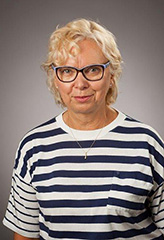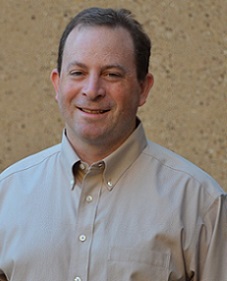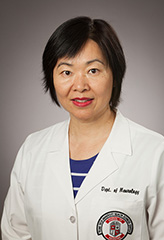Facilities
GIA Lab Facilities
The GIA has three main lab facilities and researchers that are focused in each area.
Molecular Biology Facility

Research Assistant Professor, Neurology Department
The Garrison Institute on Aging Molecular Biology Facility is managed by Maria Manczak,
PhD. Accessible equipment for collaborative projects are categorized under the following
areas.
Protein study:
Azure Biosystem C450, BioTek Synergy H1 Hybrid Reader, BioTek ELX405 washer, Beckman
Coulter Du640 spectrophotometer, Eppendorf 5424 bench-top centrifuges, Bio-Rad western
blot systems.
DNA and RNA analysis:
Applied Biosystems 7900HT Fast Real-time PCR system, Applied Biosystems Veriti 60
and 96 wells thermal cycler, Eppendorf Mastercycler, Thermo Scientific NanoDrop 2000c
spectrophotometer, Sorvall Super T21 centrifuge.
Immunohistochemistry:
Olympus Model IX71 Microscope, AMG EVOS microscope, Leica automated cryoyostats, two
darkrooms.
Cell culture:
Labconco Logic+ Biosafety level 2 hood, cell culture incubators, Eppendorf 5810R centrifuge,
Nexcelom Cellometer Vision, New Brunswick Galaxy 14S Hypoxia Chamber.
Electrophysiology Facility

Associate Professor, Pharmacology and Neuroscience | PhD Neuroscience, The University of Wisconsin-Madison
The Garrison Institute on Aging Electrophysiology Facility is managed by J. Josh Lawrence,
PhD. Accessible equipment for collaborative projects is categorized under the following
areas.
Brain Slice Physiology
Luigs and Neumann Infrapatch electrophysiology rig, including a Zeiss Axio Examiner
upright microscope with infrared Dodt gradient contrast, a Colibri LED light source
and beam combiner, AxioCam MrM digital camera, motorized z focus, and sliding magnification,
all seamlessly integrated for recording from fluorescent neuronsand optogenetic stimulation
in acute brain slices. Electrophysiological recordings are performed with a Multiclamp
700B two-headstage patch clamp amplifier and Digidata 1440 A/D interface. Scientifica
brain slice electrophysiology rig includes a Zeiss Axio Examiner upright microscope
with infrared Dodt gradient contrast, Scientifica motorized z focus, sliding magnification,
Thorlabs LED light source, all seamlessly integrated for recording from fluorescent
neurons and optogenetic stimulation in acute brain slices. The rig is also equipped
with Scientifica Patch Pro 2000 equipment, featuring a UMS motorized microscope stage
and two motorized 4 axis super smooth PatchStar manipulators designed for precise
positioning and stability of electrodes. For electrophysiological recordings, the
rig is equipped with a Multiclamp 700Btwo-headstage patch clamp amplifier and Digidata
1440 A/D interface.
Additional equipment includes a Narishige PC-10 electrode puller for pipette fabrication,
a Leica 1200 VTS vibratome with VibroCheck accessory for acute brain dissection, and
additional accessories for brain dissection and maintenance of acute brain slices
at optimal health. The close proximity of GIA’s tissue culture facility allows neuronal
cultures to be employed for electrophysiological experiments.
Behavioral Facility

Senior Research Associate, Garrison Institute on Aging, TTUHSC
The Garrison Institute on Aging Behavioral Facility is managed by Linda Yin. The Behavioral Facility has equipment for collaborative projects that are categorized under the following areas. Motor deficit screening can be performed using a 5 lane accelerating rotarod, a grid suspension apparatus, a grip strength device, a balance beam and in a pole test apparatus. Exploratory and anxiety related behavioral screening can be performed using an open-field, a light dark box, and a three-chambered social interaction apparatus. Behaviors relating to associative, reference, procedural and working memory as well as behavioral flexibility can be screened using a Morris Water Maze, a hybrid Water/T-maze, a Y-Maze, an open-field based novel object test, and a fear-conditioning system. Most of our systems are Noldus based, and where relevant infared backlit, employing an automated means for the collection of data that is both precise and accurate. Standard operating protocols for the use of all equipment as well as training for use of equipment are available.
Got Questions?
We're here to help. Contact us if you have questions.
Ruben Gonzales
(806) 743 - 2408
ruben.gonzales@ttuhsc.edu

